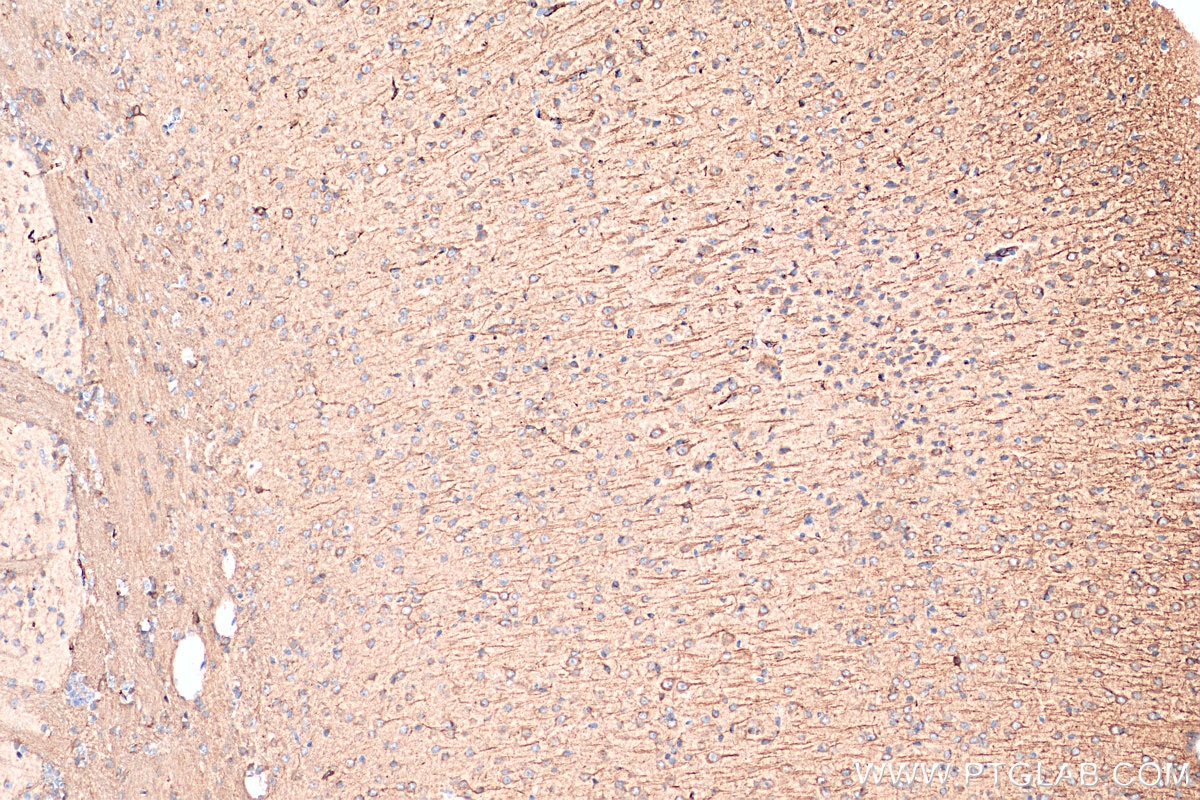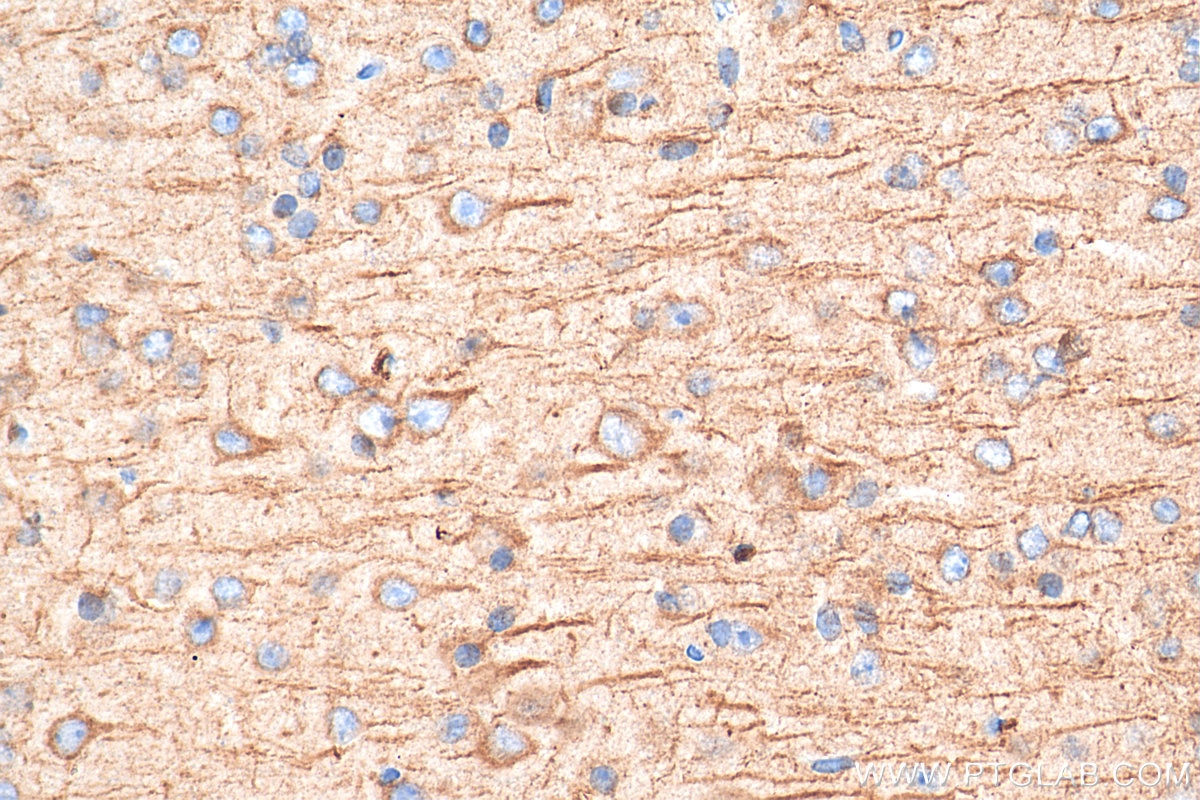PTPRT Polyklonaler Antikörper
PTPRT Polyklonal Antikörper für IHC, ELISA
Wirt / Isotyp
Kaninchen / IgG
Getestete Reaktivität
human, Maus
Anwendung
IHC, ELISA
Konjugation
Unkonjugiert
Kat-Nr. : 25473-1-AP
Synonyme
Geprüfte Anwendungen
| Erfolgreiche Detektion in IHC | Maushirngewebe Hinweis: Antigendemaskierung mit TE-Puffer pH 9,0 empfohlen. (*) Wahlweise kann die Antigendemaskierung auch mit Citratpuffer pH 6,0 erfolgen. |
Empfohlene Verdünnung
| Anwendung | Verdünnung |
|---|---|
| Immunhistochemie (IHC) | IHC : 1:50-1:500 |
| It is recommended that this reagent should be titrated in each testing system to obtain optimal results. | |
| Sample-dependent, check data in validation data gallery | |
Produktinformation
25473-1-AP bindet in IHC, ELISA PTPRT und zeigt Reaktivität mit human, Maus
| Getestete Reaktivität | human, Maus |
| Wirt / Isotyp | Kaninchen / IgG |
| Klonalität | Polyklonal |
| Typ | Antikörper |
| Immunogen | Peptid |
| Vollständiger Name | protein tyrosine phosphatase, receptor type, T |
| Berechnetes Molekulargewicht | 164 kDa |
| GenBank-Zugangsnummer | NM_007050 |
| Gene symbol | PTPRT |
| Gene ID (NCBI) | 11122 |
| Konjugation | Unkonjugiert |
| Form | Liquid |
| Reinigungsmethode | Antigen-Affinitätsreinigung |
| Lagerungspuffer | PBS with 0.02% sodium azide and 50% glycerol |
| Lagerungsbedingungen | Bei -20°C lagern. Nach dem Versand ein Jahr lang stabil Aliquotieren ist bei -20oC Lagerung nicht notwendig. 20ul Größen enthalten 0,1% BSA. |
Hintergrundinformationen
PTPRT is a member of the type IIB receptor-type protein tyrosine phosphatase family, linked to signal transduction, cell adhesion and neurite extension. PTPRT plays a role in regulation of synaptic formation and neuronal development. It regulates synaptic function and neuronal development through interactions with neuronal adhesion molecules and the dephosphorylation of synaptic molecules. PTPRT is mainly expressed in nervous system (PMID:19816407, PMID: 25748173).
Protokolle
| PRODUKTSPEZIFISCHE PROTOKOLLE | |
|---|---|
| IHC protocol for PTPRT antibody 25473-1-AP | Protokoll herunterladenl |
| STANDARD-PROTOKOLLE | |
|---|---|
| Klicken Sie hier, um unsere Standardprotokolle anzuzeigen |



